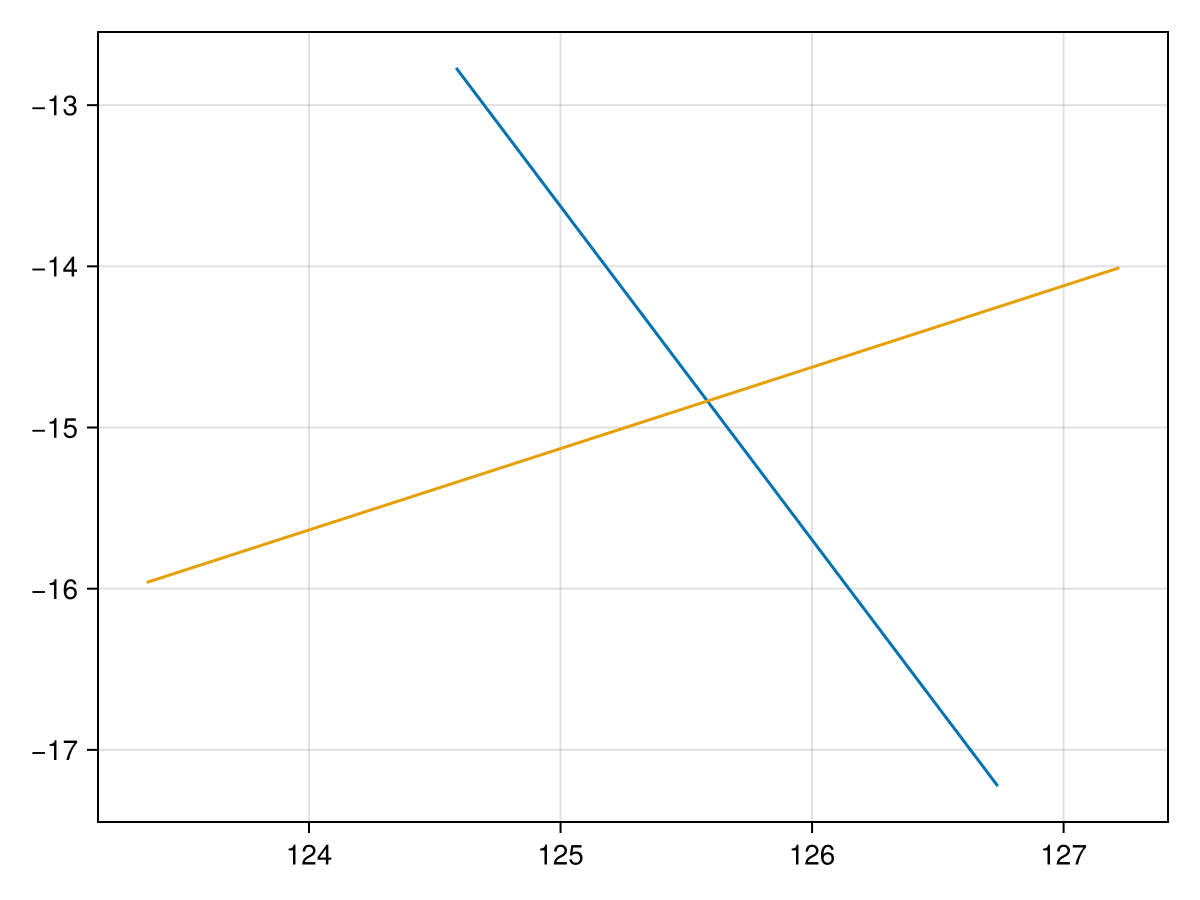Intersection checks
julia
export intersectsWhat is intersects?
The intersects function checks if a given geometry intersects with another geometry, or in other words, the either the interiors or boundaries of the two geometries intersect.
To provide an example, consider these two lines:
julia
import GeometryOps as GO
import GeoInterface as GI
using Makie
using CairoMakie
line1 = GI.Line([(124.584961,-12.768946), (126.738281,-17.224758)])
line2 = GI.Line([(123.354492,-15.961329), (127.22168,-14.008696)])
f, a, p = lines(GI.getpoint(line1))
lines!(GI.getpoint(line2))
f
We can see that they intersect, so we expect intersects to return true, and we can visualize the intersection point in red.
julia
GO.intersects(line1, line2) # truetrueImplementation
This is the GeoInterface-compatible implementation.
Given that intersects is the exact opposite of disjoint, we simply pass the two inputs variables, swapped in order, to disjoint.
julia
"""
intersects(geom1, geom2)::Bool
Return true if the interiors or boundaries of the two geometries interact.
`intersects` returns the exact opposite result of `disjoint`.
# Example
```jldoctest
import GeoInterface as GI, GeometryOps as GO
line1 = GI.Line([(124.584961,-12.768946), (126.738281,-17.224758)])
line2 = GI.Line([(123.354492,-15.961329), (127.22168,-14.008696)])
GO.intersects(line1, line2)output
julia
true
```
"""
intersects(geom1, geom2) = !disjoint(geom1, geom2)
#= Returns true if there is at least one intersection between edges within the
two lists of edges. =#
function _line_intersects(
edges_a::Vector{<:Edge},
edges_b::Vector{<:Edge}
)Extents.intersects(to_extent(edges_a), to_extent(edges_b)) || return false
julia
for edge_a in edges_a
for edge_b in edges_b
_line_intersects(edge_a, edge_b) && return true
end
end
return false
endReturns true if there is at least one intersection between two edges.
julia
function _line_intersects(edge_a::Edge, edge_b::Edge)
seg_val, _, _ = _intersection_point(Float64, edge_a, edge_b)
return seg_val != line_out
endThis page was generated using Literate.jl.